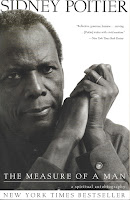On this commemoration day of Niels Bohr, we reflect on an anecdote about the famous scientist receiving a colleague* in his log cabin at the Danish coast. The fellow visitor noticed Niels Bohr had put a horseshoe in the cabin as a talisman – lucky charm. He asked Bohr if he, as a scholar, could believe that his horseshoe could bring good luck. Niels Bohr is said to have replied: "I don't believe it, but they tell me that it brings good luck, even if you don't believe it!".
This anecdote says a lot about what faith is. Faith is not
scientific certainty, not perfect control. Rather, faith is a humble attitude
of surrender. It is acknowledging that others could know more about the theme,
something that does not suit us very well in this time of strong opinions. It is letting go of all
certainty, leaving the truth open and trusting others while remaining open to the
possible positive effect of your faith practice.
That doesn't mean we can believe everything. At the very
least, there must be confidence that our faith and our faith practice are good
and healthy for us. And this confidence can only grow with the help of fellow
human beings who have grown up in that same faith. There must also be respect
for the faith of others.
The anecdote also reveals something about science, or at least about the wise attitude of Niels Bohr as a scientist. Niels Bohr starts from an attitude of humility. He makes a clear distinction between what he believes is true and what is actually true. He recognises there may be a difference, with a certain non-zero probability. Probabilities are popular in quantum mechanics. Moreover, even though he doesn’t really believe it, Bohr opens the door to the possibility of the workings of lucky charm, an interesting viewpoint for the world of quantum mechanics, where the observer may influence the actual outcome of a measurement. According to some, this may explain the evolution of the universe.
I refer to my blog Bigger than my faith and to Belief Creates the Actual Fact.
(*) Probably not Albert Einstein. The frequent scientific dialogues between the two have suggested Einstein as a visitor, but that is an apocryphal story, a so-called urban legend.






